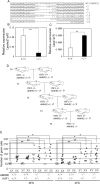Heat shock factor 1 protects germ cell proliferation during early ovarian differentiation in medaka
- PMID: 31061435
- PMCID: PMC6502851
- DOI: 10.1038/s41598-019-43472-4
Heat shock factor 1 protects germ cell proliferation during early ovarian differentiation in medaka
Abstract
The heat shock response is important for the viability of all living organisms. It involves the induction of heat shock proteins whose expression is mainly regulated by heat shock factor 1 (HSF1). Medaka (Oryzias latipes) is a teleost fish with an XX/XY sex determination system. High water temperature (HT) inhibits the female-type proliferation of germ cells and induces the masculinisation of XX medaka in some cases during gonadal sex differentiation. Here, we investigated the roles of HSF1 on the proliferation of germ cells using HSF1 knockout medaka. Loss of HSF1 function under HT completely inhibited the female-type proliferation of germ cells, induced the expression of the anti-Mullerian hormone receptor type 2 (amhr2) and apoptosis-related genes, and suppressed that of the dead end (dnd) and heat shock protein-related genes. Moreover, the loss of HSF1 and AMHR2 function under HT recovered female-type proliferation in germ cells, while loss of HSF1 function under HT induced gonadal somatic cell apoptosis during early sex differentiation. These results strongly suggest that HSF1 under the HT protects the female-type proliferation of germ cells by inhibiting amhr2 expression in gonadal somatic cells. These findings provide new insights into the molecular mechanisms underlying environmental sex determination.
Conflict of interest statement
The authors declare no competing interests.
Figures





References
Publication types
MeSH terms
Substances
LinkOut - more resources
Full Text Sources
Molecular Biology Databases

